Stat of the Match: Liverpool 4-1 Ipswich Town
Liverpool beat Premier League strugglers Ipswich in routine fashion on Saturday. The opening 11 minutes told the story of the whole game.
Liverpool brushed Ipswich Town aside 4-1 at Anfield on Saturday afternoon. It reached the point where it felt like a testimonial or legends match. It just needed Mark Gonzalez to come off the bench to prove the point.
The pessimistic end of the Reds’ fanbase may have been nervous about the outcome before the game. They needn’t have been. Liverpool had won their previous 10 home league matches against newly promoted opposition by an aggregate scoreline of 34-7. Even allowing for Ipswich having recorded two of their three league victories on the road, anything other than a home win would’ve been the shock of 2024/25.
On the face of it, Town manager Kieran McKenna might be reasonably pleased with the statistics from the match. If you told him in advance that Liverpool would have 16 shots, less than half of their total at Brentford, while Ipswich took three but they would all be on target with two Opta-defined big chances among them, he’d probably ask you how the hell you knew that. Once he’d calmed down, McKenna would also rate those numbers as satisfactory.
The problem for the visitors was that it only took Liverpool’s ninth shot, which was a rebound from their eighth, for the score line to move to 3-0. Had this game somehow been goalless after 90 minutes as the previous league match was, there’s little doubt we’d have seen somewhere around the 37 shots which Arne Slot’s men unleashed at the Gtech Stadium.
When Dominik Szoboszlai broke the deadlock in the 11th minute, if it wasn’t quite game over then George Sephton could’ve probably called last orders at least. It’s worth revisiting what occurred in the match prior to the Hungarian’s strike, as it contained an example of almost everything which followed between that moment and full time.
You could almost say the same for the opening 45 seconds. Liverpool retained possession from kick-off to that point, which was when Cody Gakpo unleashed a shot from outside the box. The Dutchman would go on to score two goals and assist another, recording three goal involvements for the Reds for the first time.
The home side utterly dominated possession from start to finish. By the 41st minute they had completed more passes than Ipswich did in the entire game. Virgil van Dijk attempted one fewer final third pass than the visitors yet completed 21 more.
From the goal kick following Gakpo’s early shot, which felt like it took place half an hour later, the Tractor Boys moved up the pitch well. They reached the final third, only to find Ibrahima Konaté in their way.
As David Lynch noted in his latest article, the Frenchman made the most defensive actions across the match (see below image). Two minutes later, the same ballet played out; Ipswich attacked on the right before running into the great wall of Konaté.
The earliest stages of the game also saw the Reds display crossing styles they would use later in the match. In the seventh minute, Szoboszlai fired a delivery across from near the front right corner of the penalty box.
His radar wasn’t perfectly attuned, though, with the ball reaching Andy Robertson on the opposite flank. It was similar in terms of location and minimal angle to a cross which Trent Alexander-Arnold provided at the end of the half, with Luis Díaz just unable to apply the finishing touch on that occasion.
The one cross from the left in the opening 11 minutes of the game came from Gakpo. It was unsuccessful, but as you see below, it was hit from the same zone from which the 25-year-old later assisted Mohamed Salah (represented by the yellow arrow).
All three attempted crosses from Gakpo were clearly aimed to reach the back post area; Josh Williams’ latest newsletter has more on Liverpool’s strategy with wide deliveries, which he and I discussed further on his latest podcast.
Intended cross recipient Salah had the only other unsuccessful shot of the opening exchanges of the match, with a low value (0.04 xG) effort immediately blocked. A subsequent unsuccessful Liverpool attack indirectly enabled them to take the lead.
By regaining possession, Ipswich were able to move towards the Reds’ goal. This drew them out from their deep block, which helped Liverpool once Robertson had tackled Omari Hutchinson to win the ball back. The Scot passed to Alisson Becker, who moved possession onto van Dijk. He in turn fed Konaté, who collected the ball maybe five yards from the halfway line.
At that point, the Ipswich back line was about 10 to 15 yards inside their half. They moved back as Ibou advanced, but were still a similar distance outside their box rather than camped on the 18-yard line when he played the pass which unlocked the game. In positional terms it was the deepest key pass Liverpool played, illustrating what is possible from seemingly innocuous areas once a little space opens up.
It’s interesting too that the short sequence leading to the goal featured three of the back four, as the defenders were Liverpool’s leading quartet across the whole match for progressive passes. As with the van Dijk final third stat, this shows how far forward the Reds were able to play in absolute comfort.
As such, there’s little to be gained from forensically analysing the other 79 minutes of the match. Almost everything of note we saw was there in the 623 seconds from kick off up to Szoboszlai’s goal.

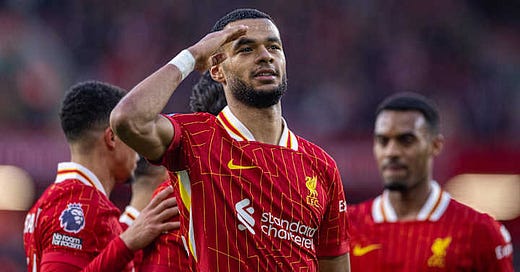


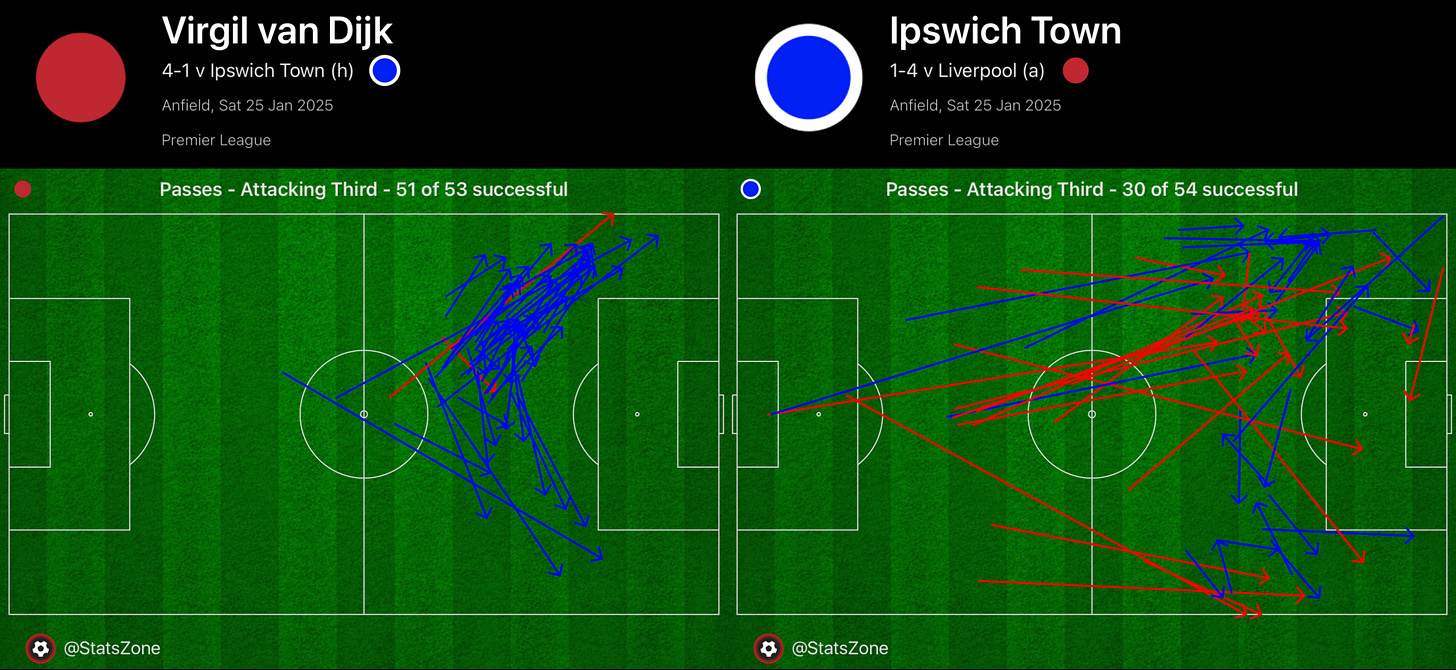
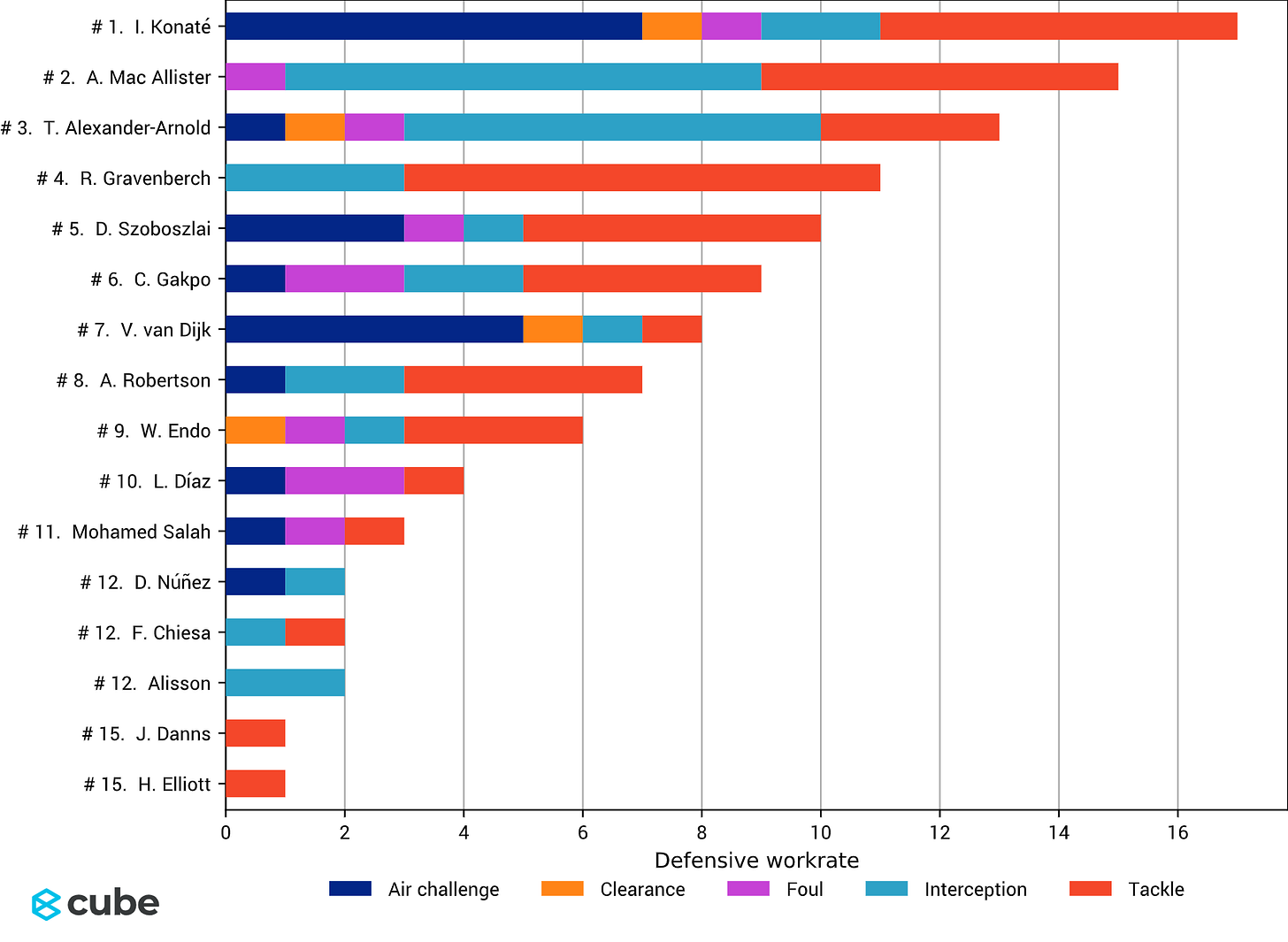
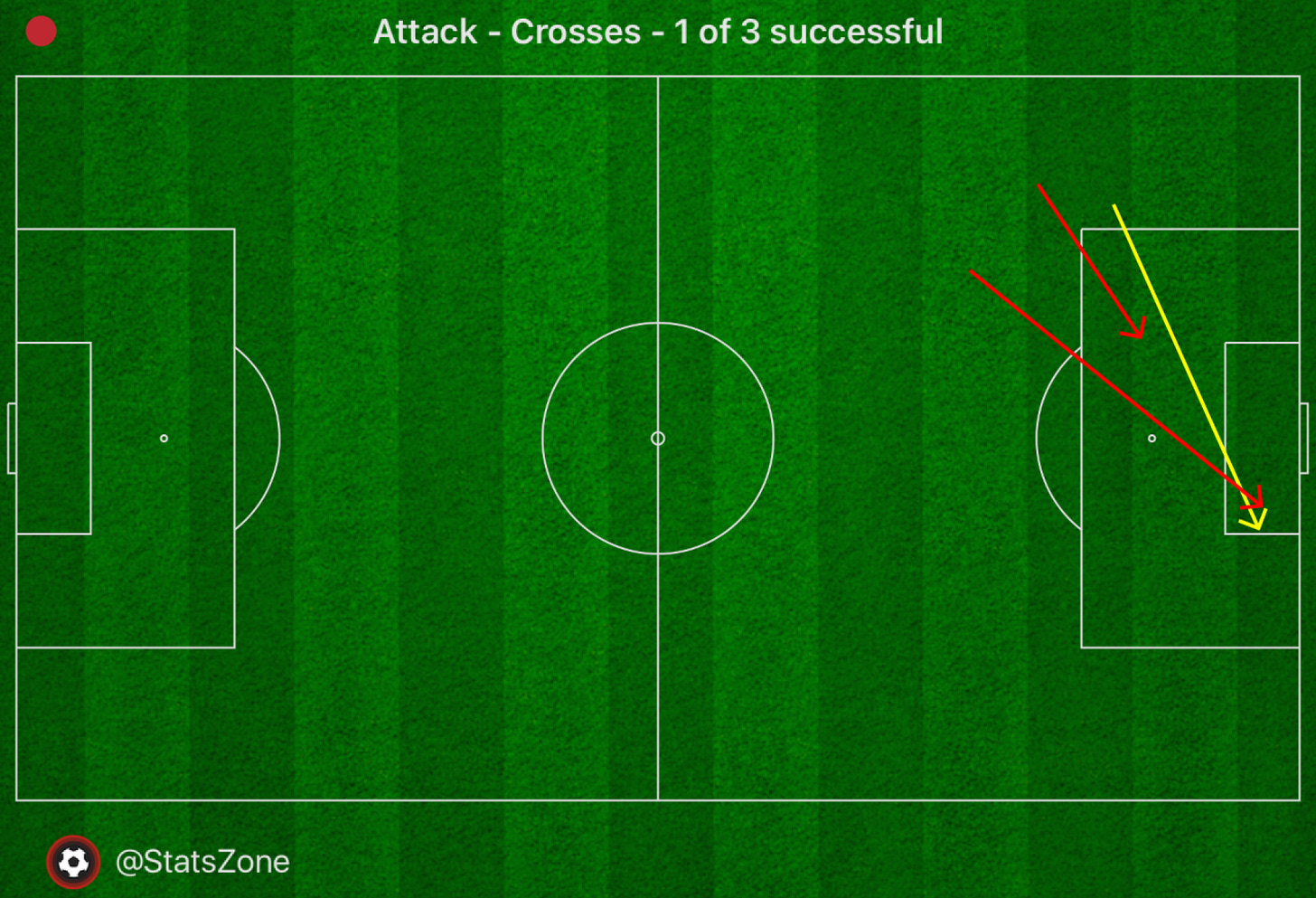

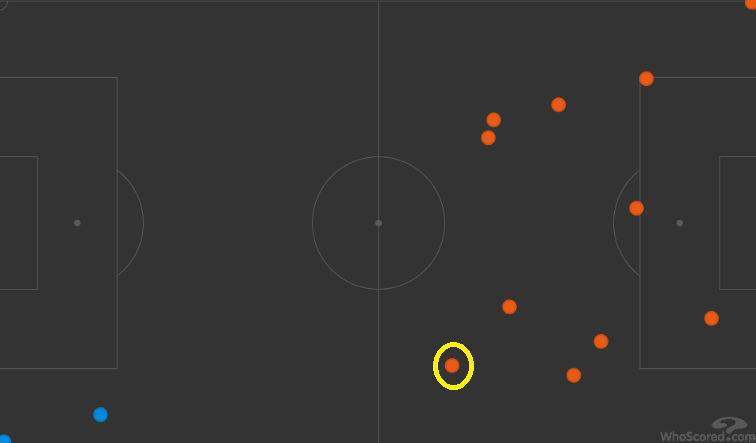


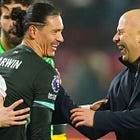
Ha, do you feel Mark Gonzalez is a legend or that he deserves a testimonial?